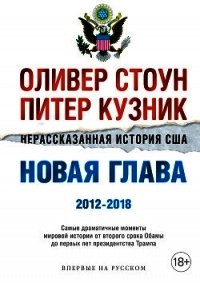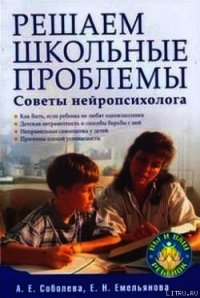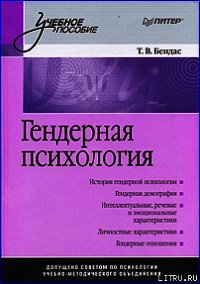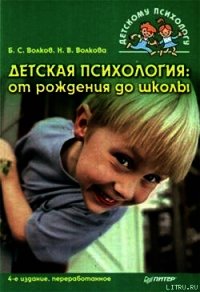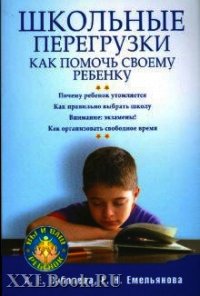Нерассказанная история США - Стоун Оливер (книги онлайн полностью бесплатно txt) 📗
64. Meil Hobson Barbara. Uneasy Virtue: The Politics of Prostitution and the American Reform Tradition. – C: University of Chicago Press, 1990. – P. 169, 176–177; Connelly Mark Thomas. The Response to Prostitution in the Progressive Era. – Chapel Hill: University of North Carolina Press, 1980. – P. 143–145.
65. Brandt Allan M. No Magic Bullet: A Social History of Venereal Disease in the United States Since 1880. – NY: Oxford University Press, 1987. – P. 59–60, 101; Connelly Mark Thomas. The Response to Prostitution in the Progressive Era. – Chapel Hill: University of North Carolina Press, 1980. – P. 140; Kennedy David M. Over Here: The First World War and American Society. – NY: Oxford University Press, 1992. – P. 186.
66. Brandt Allan M. No Magic Bullet: A Social History of Venereal Disease in the United States Since 1880. – NY: Oxford University Press, 1987. – P. 101–106; Kennedy David M. Over Here: The First World War and American Society. – NY: Oxford University Press, 1992. – P. 186–187.
67. Brandt Allan M. No Magic Bullet: A Social History of Venereal Disease in the United States Since 1880. – NY: Oxford University Press, 1987. – P. 116–119.
68. Randolph Bourne. Unfinished Fragment on the State // Untimely Papers / Ed. J. Oppenheim. – New York: B. W. Huebsch, 1919. – P. 145.
69. Tucker Jonathan B. War of Nerves: Chemical Warfare from World War I to Al-Oaeda. – NY: Pantheon Books, 2006. – P. 10.
70. Miles Wyndham D. The Idea of Chemical Warfare in Modern Times // Journal of the History of Ideas. – № 31. – 1970. – P. 300–303.
71. “Declaration (IV, 2) Concerning Asphyxiating Gases”, Document 3. В кн.: Adam Roberts and Richard Guelff, ed. Documents on the Laws of War, 3rd ed. (New York: Oxford University Press, 2000), 60.
72. Crazed by Gas Bombs // Washington Post. – 1915. – April 26.
73. New and Peculiar Military Cruelties Which Arise to Characterize Every War // Washington Post. – 1915. – May 30.
74. Topics of the Times // New York Times. – 1915. – May 8.
75. Hershberg James. James B. Conant: Harvard to Hiroshima and the Making of the Nuclear Age. – NY: Alfred A. Knopf, 1993. – P. 44.
76. David Jerome Rhees, The Chemists’ Crusade: The Rise of an Industrial Science in Modern America, 1907–1922, PhD Thesis, University of Pennsylvania, 1987, 169; Hershberg James. Op. cit. – P. 45–49.
77. Hershberg James. Op. cit. – P. 42.
78. Tyner James A. Military Legacies: A World Made by War. – NY: Routledge, 2010. – P. 98–99.
79. Millikan Robert A. The New Opportunities in Science // Science. – № 50. – 1919. – P. 292.
80. Moreno John D. Undue Risk: Secret State Experiments on Humans. – NY: Routledge, 2001. – P. 38–39; Andy Sagar, ‘Secret, Deadly Research’: Camp AU Scene of World War Training Trenches, Drill Field // Eagle, American University, January 15,1965.
81. Sagar, ‘Secret, Deadly Research’.
82. Moreno John D. Undue Risk: Secret State Experiments on Humans. – NY: Routledge, 2001. – P. 38–39; Sagar, ‘Secret, Deadly Research’.
83. Martin K. Gordon, Barry R. Sude, Ruth Ann Overbeck, and Charles Hendricks, “A Brief History of the American University Experiment Station and U. S. Navy Bomb Disposal School, American University”, Office of History, U. S. Army Corps of Engineers, June 1994, 12.
84. Hershberg James. James B. Conant: Harvard to Hiroshima and the Making of the Nuclear Age. – NY: Alfred A. Knopf, 1993. – P. 46–47.
85. Barry Richard. America’s Most Terrible Weapon: The Greatest Poison Gas Plant in the World Ready for Action When the War Ended // Current History. – № 125. – 1919. – P. 127.
86. Harris Robert, Paxman Jeremy. A Higher Form of Killing: The Secret History of Chemical and Biological Warfare. – NY: Random House, 2002. – P. 35.
87. Barry Richard. America’s Most Terrible Weapon: The Greatest Poison Gas Plant in the World Ready for Action When the War Ended // Current History. – № 125. – 1919. – P. 127–128.
88. Jenkins Dominick. The Final Frontier: America, Science, and Terror. – L.: Verso, 2002. – P. 38.
89. Tucker Jonathan B. War of Nerves: Chemical Warfare from World War I to Al-Qaeda. – NY: Pantheon Books, 2006. – P. 19–20.
90. Barry Richard. America’s Most Terrible Weapon: The Greatest Poison Gas Plant in the World Ready for Action When the War Ended // Current History. – № 125. – 1919. – P. 128.
91. Tanaka Yuki. British ‘Humane Bombing’ in Iraq During the Interwar Era // Bombing Civilians: A Twentieth-Century History / Ed. Yuki Tanaka and Marilyn B. Young. – NY: New Press, 2009. – P. 8, 11.
92. Encyclopedia of World War I: A Political, Social and Military History / Ed. Spencer Tucker. – Santa Barbara, CA: ABC–CLIO, 2005. – P. 57.
93. Tanaka Yuki. British ‘Humane Bombing’ in Iraq. – P. 13–29.
94. Jenkins Dominick. The Final Frontier: America, Science, and Terror. – L.: Verso, 2002. – P. 2–3.
95. Jenkins Dominick. The Final Frontier: America, Science, and Terror. – L.: Verso, 2002. – P. 2–3.
96. Irwin Will. “The Next War”: An Appeal to Common Sense. – NY: E. P. Dutton & Co., 1921. – P. 37–38.
97. The Chemical Industry Show // New York Times. – 1917. – September 26.
98. Jones Daniel P. American Chemists and the Geneva Protocol // Isis. – 1980. – № 3. – P. 432, 438.
99. Jones Daniel P. American Chemists and the Geneva Protocol // Isis. – № 3. – 1980. – P. 432, 438; Tucker Jonathan B. War of Nerves: Chemical Warfare from World War I to Al-Qaeda. – NY: Pantheon Books, 2006. – P. 21–22.
100. Tucker Jonathan B. War of Nerves: Chemical Warfare from World War I to Al-Qaeda. – NY: Pantheon Books, 2006. – P. 20.
101. Gardner Lloyd C., LaFeber Walter F., McCormick Thomas J. Creation of the American Empire. Vol. 2: U. S. Diplomatic History Since 1893. – Chicago: Rand McNally, 1976. – P. 336.
102. President Wilson’s Message to Congress on War Aims // Washington Post. – 1918. – January 9.
103. Gardner Lloyd C., LaFeber Walter F., McCormick Thomas J. Creation of the American Empire. Vol. 2: U. S. Diplomatic History Since 1893. – Chicago: Rand McNally, 1976. – P. 343.
104. Gardner Lloyd C., LaFeber Walter F., McCormick Thomas J. Creation of the American Empire. Vol. 2: U. S. Diplomatic History Since 1893. – Chicago: Rand McNally, 1976. – P. 343; Herring George C. From Colony to Superpower: U. S. Foreign Relations Since 1776. – NY: Oxford University Press, 2008. – P. 423.
105. Johnson Robert David, The Peace Progressives and American Foreign Relations. – Cambridge, MA: Harvard University Press, 1995. – P. 82–83.
106. Our Men in Russia at Foch’s Demand // New York Times. – 1919. – January 10.
107. Johnson Robert David, The Peace Progressives and American Foreign Relations. – Cambridge, MA: Harvard University Press, 1995. – P. 84, 320. (Table A.1, “Votes on Anti-imperialist Issues”, Section J).
108. Wells H. G. The Shape of Things to Come. – NY: Macmillan, 1933. – P. 82.
109. Kagan Donald. On the Origins of War: And the Preservation of Peace. – NY: Doubleday, 1995. – P. 285.
110. LaFeber Walter. The American Age: United States Foreign Policy at Home and Abroad Since 1750. – NY: W. W. Norton, 1989. – P. 297.
111. Ibid. – P. 299.
112. Ibid.
113. Wilson Woodrow. Essential Writings and Speeches of the Scholar-President/ Ed. Mario DiNunzio. – NY: New York University Press, 2006. – P. 36.
114. Boller Paul F., Jr., Presidential Anecdotes. – NY: Oxford University Press, 1981. – P. 220.
115. Gardner Lloyd C., LaFeber Walter F., McCormick Thomas J. Creation of the American Empire. Vol. 2: U. S. Diplomatic History Since 1893. – Chicago: Rand McNally, 1976. – P. 340–341.
116. Herring George C. From Colony to Superpower: U. S. Foreign Relations Since 1776. – NY: Oxford University Press, 2008. – P. 418, 426.
